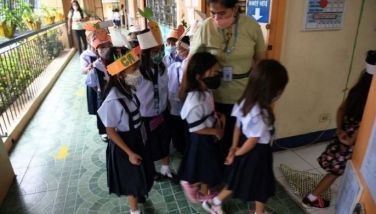RP land mass moving toward mainland Asia
MANILA, Philippines - An official of the Department of Science and Technology (DOST) yesterday said that based on the latest geophysics research, it appeared that the Philippine land mass is moving toward mainland Asia at an average of seven centimeters every year.
In a press statement, DOST Undersecretary Graciano Yumul, a leading authority in geology, explained that the country has been moving slowly, so it is not felt by the people.
He also calculated that considering the limited movement, it would take millions of years for the country to be connected to mainland Asia.
“In 50 million years, the Philippines will be reconnected to mainland Asia because of the tectonic movements,” Yumul said during the 2009 Earth Sciences International Conference (ESIC) held at the Heritage Hotel last Aug. 27.
Manifestations of such tectonic movements include an old railroad that was found submerged in the sea of Cavite, south of Metro Manila, while a very old artesian well on Mindoro island was also discovered buried in the sea.
These indicate the Philippine archipelago’s slow shift westward.
“These scenarios,” the DOST official said, “corroborate our research on tectonic movement since nobody would put a railroad or a well in the sea.”
The explanation was that the Philippines was once part of the super continent Rodinia about 1.1 billion to 750 million years ago but it broke up because of a phenomenon called Super Continent Cycle, where the Earth’s continents alternately merge into a single super continent, then split into numerous continents, then merge again.
It would take 300-500 million years to complete the cycle.
The 2009 ESIC brought together scientists, researchers, students and other professionals from the Association of Southeast Asian Nations (ASEAN) who presented and discussed results of joint researches in the past two years under the ASEAN University Network-Southeast Asia Engineering Education Development Network (UN/SEED-Net).
The research presentations included tectonics, crustal deformation, geohazards, marine geology, and climate change.
Data from such scientific findings are expected to help ASEAN governments in developing strategies to adapt to environment challenges and disaster risk management.
There are 30 universities under the UN/SEED-Net made up of 19 leading universities from the ASEAN and 11 Japanese supporting universities.
Yumul is the current chairman of the ASEAN Committee on Science and Technology.
- Latest
























